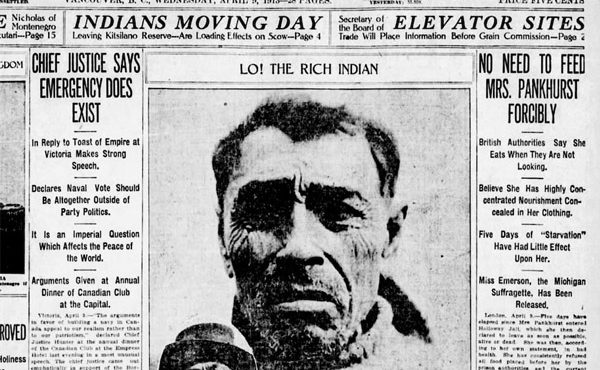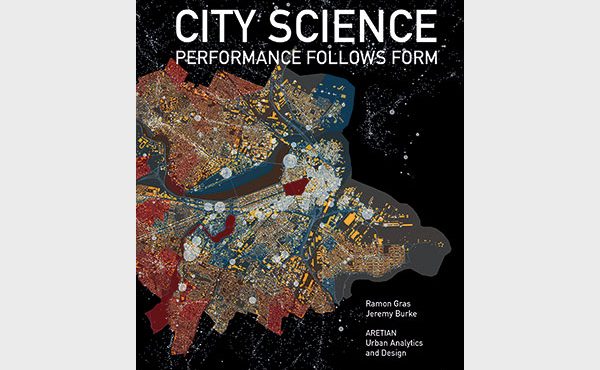

In a series called Detroit Rising, Richard Florida profiled Detroit’s creative renaissance and rebound from economic collapse. It showed how the Motor City, like many once flourishing cities, already has the fabric of a liveable city – historic, adaptable buildings in walkable areas – and now, what is needed are creative people who are passionate about revitalization to occupy those spaces. This is happening in Detroit. But, it needs to happen in struggling cities throughout North America.

Living in Vancouver, I don’t alway see how cities have been impacted by the global recession. When seen through the eyes of a tourist, most of the cities I’ve visited since 2008 don’t really look like they are suffering (NYC, Montreal, London, Barcelona, etc.).
I hadn’t been to cities where the recession is really evident until I went to Memphis. Prior to going, I hadn’t heard anything about Memphis and it wasn’t on my must-see list. But, my husband and I were doing a Southern road trip to New Orleans and thought it would be nice to check out the other nearby music cities.
Memphis Abandoned
Memphis is home of the blues, Elvis and really amazing ribs. Like Detroit, it also has an impressive history that you can sense just walking around the downtown core (Beale Street is the original home of the blues; the Lorraine Hotel where Martin Luther King was assassinated is still perfectly intact; so are Graceland and Sun Records, where many great artists recorded legendary tracks). The city has many beautiful old buildings, but many of them are empty.

After checking out the main attractions, we decided to see if the city had any charming neighbourhoods and found that much of the downtown core is quiet with minimal pedestrian activity. We did discover one area – South Main – where several revitalization initiatives are underway.
The South Main district grew around the local train stations – Union and Central Station, with most of the now historic buildings built between 1910 and 1920. The area’s businesses catered to the railroad passengers. But when railroad era ended in the 60s, South Main went downhill.
This culminated in 1968 with the assassination of Dr. Martin Luther King Jr. at the Lorraine Hotel in South Main (he was there during a Memphis Sanitation Workers labour dispute to bring attention to the working poor). After Dr. King’s death, riots ensued in cities all over the nation and South Main became warehouses and empty buildings.

“New ideas require old buildings”
Jane Jacobs once said this. And if it is the case that new ideas require old buildings, then the building blocks for Downtown Memphis and South Main to become a liveable community are already there. But it takes creative, passionate people to occupy those spaces and create community.
Recognition of the value of historic buildings along South Main Street became key to the neighborhood’s early revitalization. In 1982, the U.S. Department of the Interior designated South Main Street as a National Register Historic District, recognizing South Main as a prime example of early twentieth century commercial architecture.
Although the historic district designation set the tone for revitalization, movement of artists into the neighborhood provided momentum for redevelopment and reinvestment in the area, artists such as Robert and Annie McGowan.

“It was, at first, Annie’s and my vigorous efforts that initiated attention to South Main’s potential for revitalization. In fact, the then Center City Commission had officially excluded South Main from their downtown revitalization plans,” said Robert McGowan. “It was only after much effort by Annie and me, and then a bit later by other newcomers, that the City got on board with revitalizing South Main.”
Community investment eventually led to developer investment. According to Lorie Chapman from the Downtown Memphis Commission, both individuals and developers saw potential in adaptive reuse of South Main’s historic commercial and industrial buildings. A neighborhood association was created, art galleries opened in the area and it was marketed as an arts district. The Downtown Memphis Commission also began providing development incentives and marketing support. Other Memphis residents were drawn to the area by large, inexpensive real estate, but crime was still an issue.

“In 1987, my good friend Robert McGowan told me about buildings on South Main Street that were large and cheap,” said South Main resident Bert Sharpe. “There was no one here except about a half a dozen businesses that had hung on after the killing of Martin Luther King, and the decay of the downtown area. At that time you could stand in the middle of South Main Street for an hour without seeing a car, or a person for that matter. The street on the back side of our property was another matter. There were thirty five women working the street.”
Bert wrote a letter to the mayor and the local police and within two days the girls were gone. Over time, along with them went the drugs and guns.
“Our neighborhood became a safe place for people to walk and for outsiders to visit. That was twenty four years ago. Now the street is full of people shopping, and the restaurants and businesses are surviving,” said Sharpe.
Attracting the right kind of people
“Old buildings provide a walkable community and cheap, reconfigurable space where people can make new stuff. They can develop their company, make art, make a new technological innovation,” said Florida. “When it comes to revitalization, It’s not about attracting the next big thing like a big sports stadium or museum, it’s about attracting the right kind of people that want to rebuild the city.”
In Memphis, the revitalization efforts were initially driven by the local community with people like Robert and Annie – not by corporations or government. Today, there is a small pocket of restaurants, apartments, galleries, artist studios and retail. The extension of the trolley line into South Main has made the neighborhood more accessible, and the Civil Rights Museum (attached to the Lorraine Motel where Martin Luther King Jr. was shot) and a Memphis Farmers Market attract people to the area. On the last Friday of every month, businesses and residents host the “South Main Trolley Night”, an on-street festival with entertainment, art openings and refreshments. The Memphis College of Art’s Graduate School recently redeveloped a building on South Main, and there are efforts by the local Blues Foundation to raise money to open a Memphis Blues Hall of Fame in the neighbourhood.
“There’s no silver bullet; it has taken a team of creative dedicated people and organizations, who value the neighborhood’s historic fabric and see potential for future growth, to bring the community back to life over a number of years,” said Chapman.
Due to the recession, revitalization of South Main is probably not happening as quickly as many would like. All I could think when I was walking through Downtown Memphis, especially South Main, was: how could so many historic buildings still sit vacant?
“The area still needs more people to support commercial development; more residents and more tourists are needed to ensure that businesses are successful, said Chapman. “During the recent economic downturn, the area lost a number of its art galleries.”

Like many cities hit hard by the global economy, Memphis still needs so many things to become a modern, vibrant city – bike infrastructure, business investment, better regional transit – but the community is trying to make a difference. In struggling cities across North America, this is how it must start. Revitalization must be driven by innovative, passionate people – especially entrepreneurs and artists – taking a risk and moving into an area and working, living and investing in the community. Detroit is doing it, and there is hope for Memphis.
“Life is looking up on South Main Street after years of neglect and decay. It didn’t happen overnight, and it took many people to make it happen, but the fact is, it did happen,” said Sharpe.
***
Jillian Glover is a communications advisor who specializes in urban issues and transportation. She is a former Vancouver City Planning Commissioner and holds a Master of Urban Studies degree from Simon Fraser University. She was born and raised in Vancouver and is very interested in how people in urban environments engage in their cities. In her spare time, she writes about urban issues at her blog, This City Life – which you can visit at www.thiscitylife.tumblr.com.




2 comments
Thanks for your support of the city. Though I must say, I have a feeling that a new visitor to Memphis, after having read this article, would be surprised at how much steady activity (living, working, food, music, art, etc.) is going on downtown. The area is big, and not completely re-filled as the article says, but there’s way more than just a few blocks occupied, which is the mental picture a reader might develop from the information provided. The article gives a great account of the revitalization process, but the description of downtown’s current state, I feel, needs a little more detail. It is not NY or Barcelona, but it is FAR from being a ghost town except for South Main Trolley Night (per the photos). Here are some photos to supplement those above: http://www.flickr.com/photos/downtownmemphis/
BTW – I am not a Memphis native, do not live/work downtown and have traveled extensively.
Thanks for your feedback Chris. I was only there for three days, but found that many pockets of downtown were fairly quiet without much retail/pedestrian activity. I do stress in the article that I was a tourist, not a local, so it is hard to gage what a city is really like when only there was a short amount of time.